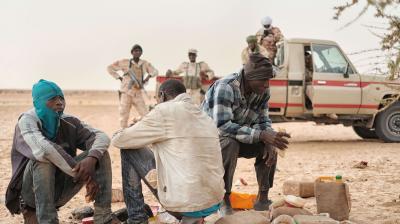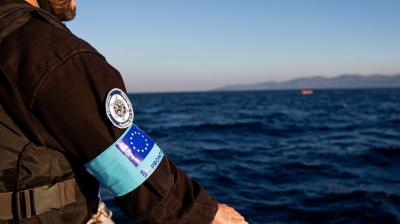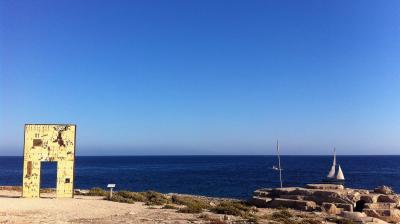On the shores of safety: migration management in Sicily
This Commentary is part of a series of three on Italy's role in the ongoing migration crisis. Also read The Italian military deployment and Organised crime and migration in Sicily.
Migration has become a key topic in the election campaign leading up to the Italian general election being held on 4 March 2018. The electoral debate has focused mainly on the achievements of the government in stemming migration flows. Following the recent wave of security measures and deals between EU member states and countries of origin and transit, the shores of Sicily have seen the arrival of far fewer migrants. So far this year, arrivals by sea have diminished by about 28% compared to the same period last year. However, the plight of the hundreds of thousands of migrants struggling to build a new life in Italy is rarely discussed in the political and electoral arena. Paradoxically, it is precisely this plight that contributes to the electorally opportune framing of migration as a threat to Italian domestic interests and its feeble economy.*
Italian asylum procedures in practice
Since 2015, migration has put severe stress on the Italian and EU asylum systems and has challenged the efficiency of their legal design. EU law (the ‘Dublin regulation’) makes Italy, as a key first point of irregular entry, primarily responsible for examining the asylum applications of migrants arriving on its shores. Partly as a result of this heavy legal and administrative burden, there are shortcomings in the implementation of asylum procedures everywhere in the country, such as a chronic lack of adequate legal support. A lack of legal support is especially felt at the preparatory stage, before any hearing of an asylum case. Even if asylum seekers are entitled to protection while their status is being determined, many among them lack information about the legal procedures and judicial systems. Furthermore, many asylum seekers live in precarious conditions outside the reception centres and lack access to medical treatment.
Case workers who we interviewed, under strict guarantees of anonymity, have highlighted many of the flaws in a system that is incapable of delivering on its protection mandate. With reception and expulsion centres being constantly at full capacity, lawyers active on the island cannot satisfy the demand for assistance. Legal support is limited, and most lawyers do not speak English or French and therefore are unable to communicate with their clients. Moreover, staff who interview newly arrived migrants and refugees are constantly under pressure and inadequately trained. According to the same case workers, there is a general lack of interest and a reduction in the time and attention dedicated to individual cases. There were frequent instances where, due to the poor quality of the interviews recorded, asylum seekers had to be summoned again years later to clarify and provide additional information about their personal history. Such episodes prolong the procedures even further and they prove detrimental for both asylum seekers who cannot move forward with their lives and to the asylum system itself which is already overburdened and often incapable of delivering on its mandate.
Perhaps of more relevance to the Italian electorate, migration procedures are applied in a way that only feeds into the public’s image of incoherent and uncontrolled migration management. Once arrived in Italy, and before beginning any legal procedure, migrants are processed in centres for first assistance and reception (CPSA). It appears to have become common practice for law enforcement personnel charged with the reception of mixed migration flows to sort newly arrived migrants into two groups by asking who would like to stay in Italy and who would rather move on to another European country. Only those arrivals who wish to remain in Italy are registered, while the others are allowed to continue their journeys. In the long run, this further complicates the situation of unregistered migrants who cross Italy’s northern border to reach another EU member state. Once intercepted by law enforcement agents, migrants are sent back to the first country they entered. In the first half of 2017, Germany alone sent over 10,000 outgoing Dublin requests to Italy.
"...staff who interview newly arrived migrants and refugees are constantly under pressure and inadequately trained."
Protracted stays without protection
As a result of the asylum procedures described above, many migrants remain stuck in Italy for extended periods of time. Recent accounts claim that an average status determination takes up to 18 months, and interviews with staff from Italian Territorial Commissions in charge of these procedures reveal that, on average, it can take well over two years for an asylum request to be granted or rejected. Migrants and refugees are barred from entering the labour market and must live in reception centres throughout the duration of this process. Nevertheless, the families and relatives they left behind in countries of origin expect remittances from them, which adds to the pressure that migrants and refugees are under.
Although structural support systems have been put in place, they are not sufficient to cover more than migrants’ and refugees’ most dire needs. In 2014, the EU created the Asylum, Migration and Integration Fund (AMIF) to ‘promote the efficient management of migration flows and the implementation, strengthening and development of a common Union approach to asylum and immigration’. Managed by the Ministry of Italy, this fund is used to support the reception of migrants and to provide for their basic needs during the asylum proceedings. Although this support amounts to EUR 30-40 a day, migrants themselves only receive a daily allowance of about EUR 2.50, with the remainder being allocated to accommodation, food, legal support and the management of reception centres.
The limited financial resources at their disposal, the lengthy legal procedures and the high rates of rejection force many migrants and refugees to look outside of the formal system to find ways to secure their futures in Europe. These ways are not necessarily licit ones. Recently, many migrants have been targeted by local and foreign criminal groups and are becoming involved in criminal activities, often without their consent. For instance, the Nigerian criminal group ‘the Black Axe’ forcefully co-opts migrants and asylum seekers from Nigeria into its criminal activities, including robberies, extortion and prostitution. Other migrants escape from the reception centres once they have become familiar with the lengthy reception and determination procedures, and once they learn that migrants cannot legally work in Italy.
"... many migrants have been targeted by local and foreign criminal groups and are becoming involved in criminal activities, often without their consent."
In some cases, migrants and refugees who have applied for asylum decide to stay in the reception centres but leave during the day in search of employment as day labourers on the island. This trend is heavily exploited by informal taxi drivers who provide shuttle services between reception centres and major Sicilian cities.
Needless to say, neither coping strategy contributes to public support for migrants and refugees in a region characterised by both high employment and rampant organised crime.
Migration as an electoral concern
The overburdened protection system has thereby contributed to public discontent with migration becoming an electoral concern, as the dynamics described above put further stress on a region historically plagued by unemployment and organized crime. Indeed, in the 2016 European Regional Competitiveness Index, Sicily ranked 237 among the 263 EU regions with a stage of development evaluated as 2 on a scale between 1 and 5. The region has the second highest unemployment rate in Italy and recently has become a stronghold for right-wing political parties such as Lega Nord who have been able to exploit the current wave of discontent and claim that they will free Sicily from mafia and unemployment, and from the ‘uncontrolled invasion’ of migrants.
Both left- and right-wing parties understand that as unemployment and migration are the major concerns of Italians, expressing support for migrants alienates the electorate from political parties. Therefore, instead of being top issues on the campaign agenda, both the current solidarity crisis and the shrinking of protection space for migrants and refugees are being skilfully circumvented in the public debate. This has the paradoxical consequence of feeding internal discontent with migrants and refugees that is subsequently met by a shift towards the offshore processing of asylum claims in the Sahel and the externalisation of migration management to Africa. This is an unsustainable endeavour that diverts attention and resources from the much-needed reform of the current EU asylum system and the need to increase protection for migrants and refugees in countries such as Italy and Greece.
This ‘out of sight, out of mind’ approach is far from the long-term solutions, compliant with international law, that the continent needs and which asylum seekers deserve.
* This commentary is based on personal interviews with current and former case workers and reception centres staff. The interviews were conducted throughout between January and February 2018.





